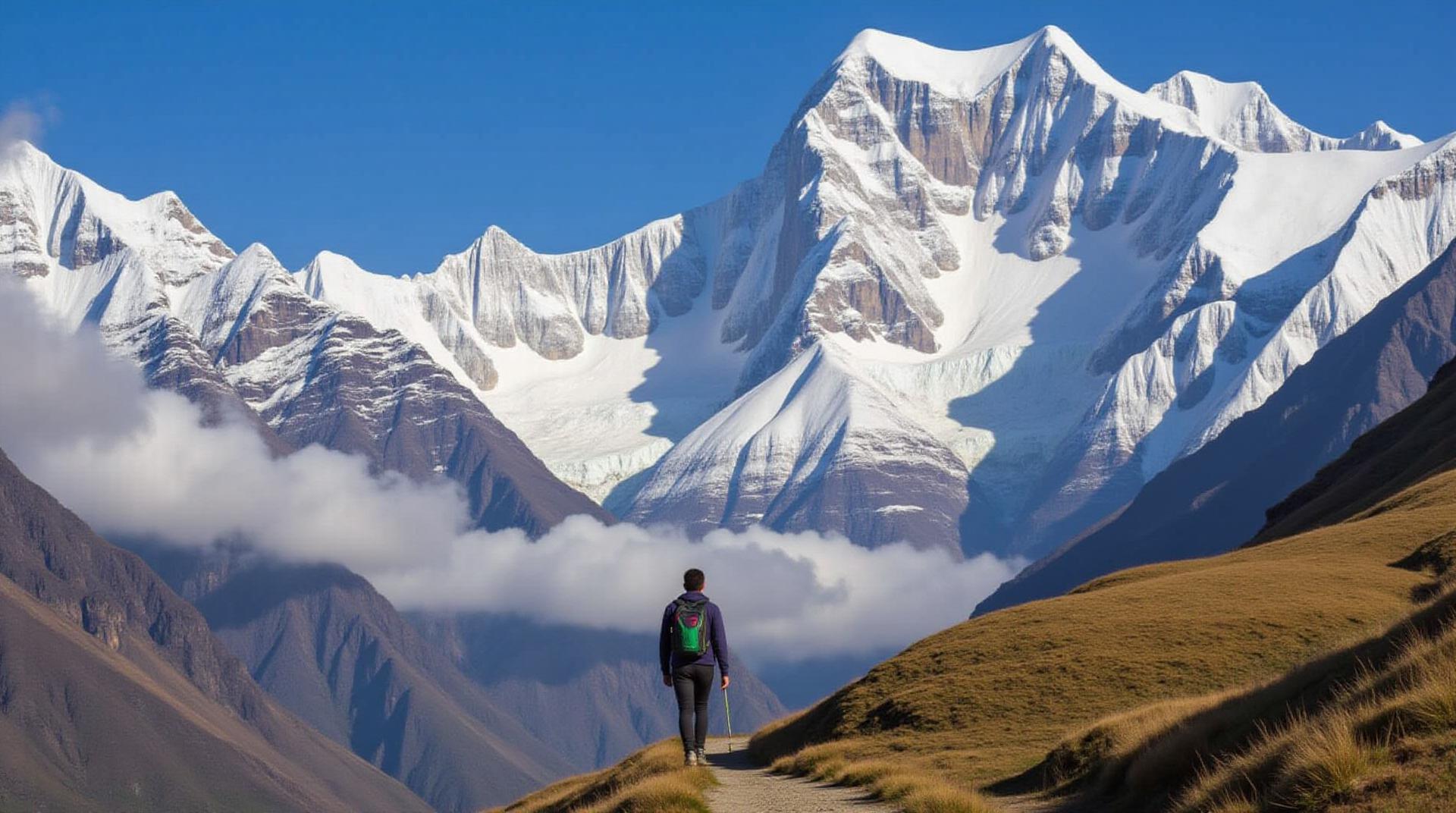Uncharted Paths: Solo Trekking in Nepal’s Himalayas

Embark on an Uncharted Adventure: Solo Trekking in Nepal’s Himalayas
Trekking through the majestic Himalayas, that epic journey of self-discovery, offers an adventure unlike any other. The unspoiled pristine trails, the stunning landscapes and the chance to connect with your inner adventurer are the true rewards. And what better place to embark on this journey than Nepal’s breathtaking Himalayas, a land celebrated for its diverse geography, culture and natural beauty?
### Delving Deeper into the Isles of Adventure
Nepal’s Himalayan treks are truly uncharted, offering a sense of personal freedom and solitude like no other. Here are a few highlights for your adventurous list:
* **The Annapurna Circuit:** This iconic 160 km trek around the Annapurna massif offers a glimpse into the culture of the Sherpa community, with stunning panoramic views and a range of local eateries.
* **Everest Base Camp Trek:** The ultimate challenge for the seasoned trekker, Everest Base Camp is a breathtaking route to experience one of the most towering mountains in the world.
* **Langtang Valley Trek:** Escape the crowds and discover the untouched beauty of Langtang Valley. Filled with ancient Sherpa villages, breathtaking flora and fauna, this trail is the perfect choice for those seeking off-the-beaten-path adventures.
* **Upper Mustang:** Explore the restricted region of Upper Mustang following centuries-old trade routes. Witness remote villages, ancient culture and stunning landscapes.
### Your Uncharted Journey: Benefits and Tools for Adventure
Elevate your Himalayan trek by embracing these benefits and tools:
* **Personal Growth:** The journey demands physical and mental strength, fostering self-reliance and adaptability.
* **Spiritual Tranquility:** Nepal’s Himalayas, with their tranquility and spiritual energy, provide a refuge from the daily stresses.
* **Exposure to Nature:** Immerse yourself in breathtaking panoramas, connect with nature’s raw beauty, and let yourself be transported by Himalayan flora and fauna.
### Practical Tips for Mastering the Himalayan Trail
Before stepping into the Himalayas, ensure you are adequately prepared:
* **Physical Fitness:** Intensify your training regimen beforehand.
* **Acclimatization:** Allow your body to adapt to the different altitudes.
* **Budgeting:** The costs of trekking, including food, accommodation and guides, can fluctuate greatly based on your itinerary.
* **gear:** Dress in layers, including moisture-wicking clothes, a durable backpack, sturdy footwear and a waterproof jacket.
* **Prepare for the Weather:** The Himalayan climate is constantly changing. Weather conditions can be unpredictable, with sudden frosts, strong winds and beautiful sunshine.
### Resources to Guide Your Uncharted Path
* **Websites:**
* The Himalayan Database – https://www.himalhayandam.com/
* TrekHimalaya – https://www.trekhimalaya.com/
* **Travel Guides:**
* Lonely Planet Nepal – https://www.lonelyplanet.com/nepal
* Rough Guide Nepal – https://www.roughguides.com/nepal
* **Online Forums:**
* The Nepali Trekkers – https://www.facebook.com/groups/NepaliTrekkers/
Embarking on a solo trek in Nepal’s Himalayas is a journey of overcoming challenges and discovering immense personal fulfillment. It’s a path that tests your limits and opens your eyes to the beauty and serenity of the world. Follow your instincts, respect the local communities and enjoy every step of your adventure. It won’t be a journey to be forgotten; remember this is an uncharted destination, wear maps cleverly, explore with an open mind and spirit and don’t be afraid to roam off-the-beaten path.
Check similar topics:
“`html
FAQs – Solo Trekking in the Nepal Himalayas
What is the best time to go hiking in the Nepal Himalayas?
- Autumn (September to November): This is the most popular time for treks, offering clear skies, comfortable temperatures, and vibrant colors.
- Spring (March to May): Experience the rhododendron blossoms and plunging, blue lakes with pleasant weather for treks.
- Summer (June to September): A very humid time with tons of sunshine and wild monsoons.
- Winter (December to February): Expect snow-capped mountains and cold nights. Only endeavor on highly curated treks.
Do I need to be an experienced hiker to do a solo trek in the Himalayas?
- Yes, being reasonably fit and comfortable with overnight backpacking is crucial. It’s recommended to have trekking experience with altitudes above 4,000 meters.
- But we have options! We offer a selection of tailored solo trekking packages to suit all experience levels, ensuring you’re familiar with a basic comfort level required.
What safety precautions should I be aware of?
- Delegated Sherpa Guides on all portable treks will enhance security.
- Ensure you have adequate travel insurance covering unforeseen accidents and medical emergencies.
- Inform someone about your travel plans, highlighting details of your trek.
- Pack well and carry essentials like water, a first aid kit, and warm attire.
What types of solo treks are there in the Himalayas?
- Classic- Trekking Trails: Well-established routes with limited crowds.
- Adventurous Treks: Routes through challenging terrains, remote villages, and less explored regions.
“`